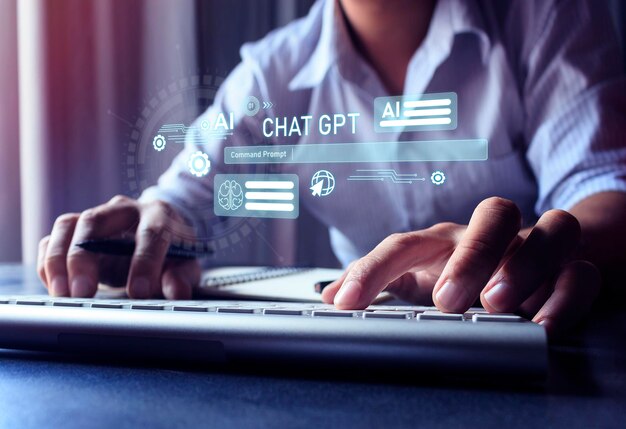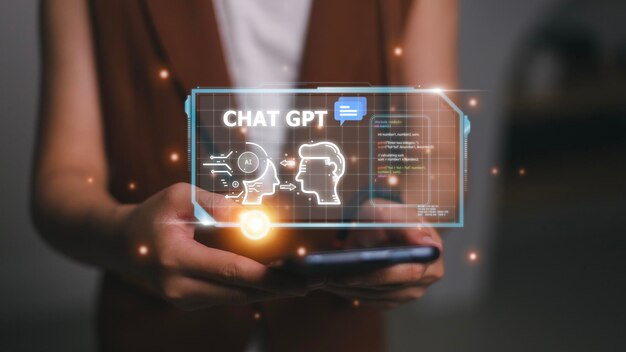Can ChatGPT Content Be Detected? Yes, And Here Is How
6 Mins Read
Published on: 11 December 2023
Last Updated on: 13 June 2024

toc impalement
Artificial intelligence is rapidly advancing and bringing about incredible changes in technology. Among these developments, there’s a transformative AI system called ChatGPT that’s impacting the digital communication landscape.
This article will explore how you can detect generated ChatGPT content from this fascinating tool.
Defining ChatGPT
Before diving into its detection mechanisms, it’s important to grasp what exactly ChatGPT is. Launched by OpenAI, a renowned lab pioneering artificial intelligence research, ChatGPT is an innovative language processing tool. Its primary function revolves around generating human-like text based on input data.
The model learns patterns and structures from vast amounts of internet text data, ensuring its generated content seamlessly mimics human language. The ‘GPT’ within its name stands for Generative Pre-training Transformer – a nod to its neural networking architecture and pre-training process.
ChatGPT’s Inner Workings
Understanding how Chat GPT works necessitates a journey into its underlying tech mechanics. Fundamentally, it runs on machine learning principles specifically focusing on language data. It utilizes a transformer model capable of comprehending context within given text sets.
During its training phase, it processes billions of sentences and documents thereby learning the nuances of syntax, semantics, and context. Once trained, it creates convincing human-like text based on the prompts provided to it.
Introduction To ChatGPT Detector
The surge in the use of tools like Chat GPT has spearheaded the development of ChatGPT content detection algorithms. These are designed to discern machine-generated content from human-created text. One such tool is the ChatGPT detector, designed to identify content created by the Chat GPT algorithm.
A noteworthy aspect of the detector lies in its model’s use of a classifier. This classifier differentiates between human and AI-generated text, providing a practical mechanism to verify the authenticity of the content. Also, using the chatgpt humanizer, you can detect and wipe the AI content instantly.
Design Of ChatGPT Detector
The design of the ChatGPT Detector, much like other modern AI applications, revolves around machine learning. It employs algorithms that have been trained on a wide range of data samples from both human texts and ones created by models like Chat GPT.
This design allows the system to recognize distinguishing textual features reflective of AI-generated content. In essence, the Detector finds patterns exclusive to Chat GPT output and then uses them as the basis for detection.
Role Of Machine Learning

Machine learning (ML) provides central functionality to the operation and accuracy of the Chat GPT Detector. Specifically, ML algorithms learn from diverse datasets comprising both human-created and AI-generated text to define crucial detection parameters.
Once trained, these ML models can predict if newly introduced data aligns with patterns associated with Chat GPT content. It is through this practice that accurate detections are possible.
NLP And AI Models
In addition to machine learning, natural language processing (NLP) heavily influences detection effectiveness. NLP is an AI subtype enabling computers to understand human language nuances – fundamental for discerning between human and machine text.
The Detector’s proficiency stems from its ability to incorporate both ML and NLP principles within its architecture. This combination ensures optimal performance when parsing through vast arrays of content types.
Classifier Algorithms
The inner workings of a detection system wouldn’t be complete without classifier algorithms. Machine learning models involved in detection use these classifiers to predict outputs based on input data relationships traced during the training phase.
They are essentially mathematical models predicting if a sample of text has characteristics similar to previously seen Chat GPT content. It’s this functionality that lends credibility and accuracy to the detection system.
Detection Techniques
Now that you’ve explored machine learning and classifiers, it’s time to look at detection techniques. The Chat GPT Detector uses advanced techniques to identify machine-generated content. It looks at features in the content such as repetition, word usage, sentence length, and potential inconsistencies in context or logic that are unusual for human authors.
By identifying patterns like these, the detector can provide a probabilistic estimate about whether the content is likely to have been generated by ChatGPT or a similar model.
Curation Of Training Set
The creation of an effective training set is not an easy task. It requires careful selection and curation of data from diverse sources. For the Detector, both known AI-generated texts and fresh offline collections of human-written content are used.
Selecting a balanced dataset ensures that the machine learning algorithms comprehensively appreciate contrasts between human and ChatGPT-generated writings.
Accuracy Of Detection
The accuracy of the ChatGPT Detector hinges on its training process and implemented ML algorithms’ efficiency. While it does do an impressive job, it’s worth mentioning that there might still be room for errors.
Some factors that might affect its accuracy include the quality of the input data, changes in ChatGPT’s algorithms, or if the text contains elements that could confuse the model.
Evaluation Metrics
The efficiency of the detector is assessed using various evaluation metrics. These include precision, recall, and AUC-ROC amongst others. Precision gauges how many of the identified AI-generated texts were correctly detected while recall measures how much AI content was identified from the entire dataset.
AUC-ROC, or Area Under the Receiver Operating Characteristic curve, is a popular performance measure that explains how well the model can distinguish between classes – in this case, between human and AI-generated text.
Limitations In Detection

Despite its impressive performance, the Chat GPT Detector has certain limitations. For instance, as AI text-generating algorithms continue to improve and evolve, they might become harder to distinguish from human-created content.
Moreover, as techniques employed by generators change, current detection mechanisms may need to adapt and update accordingly. An over-reliance on machine learning for detection could be another limitation since ML models might not entirely understand nuanced aspects of human language.
The Future Of Detection
As artificial intelligence technology continues its rapid development, detecting text written by AI systems versus humans will only grow in importance, especially for businesses hoping to harness AI while maintaining trust and transparency with customers. The future of detection will likely see tools that blend advanced deep learning with reinforced learning and symbolic reasoning to provide robust capabilities for distinguishing human and artificial outputs in written communication.
Companies that keep pace with the state-of-the-art in AI authentication will have an advantage, while those lagging behind in accurate detection risk credibility gaps and misunderstandings. The path forward lies in evolving detection strategies that are as adaptive and multifaceted as the AI systems they are tasked with recognizing.
Legal And Ethical Aspects
AI-related technologies raise their own legal and ethical issues – ChatGPT is no exception. Legally, intellectual property rights and data privacy concerns may emerge. Ethically, as students use ChatGPT, accountability, transparency, and avoiding harm or misinformation are crucial.
The evolution of AI demands revisiting legal and ethical considerations to uphold fairness and security in the virtual landscape. Stakeholders must continuously reevaluate policies as new capabilities and challenges come to light. Proactive collaboration between technologists, lawmakers, and ethicists can promote positive innovation while safeguarding society. Overall, a thoughtful, responsive approach allows advancing AI for the common good.
Final Words
The field of detecting AI-generated text is a fascinating yet complex one. The intersection of machine learning, natural language processing, classifier algorithms, and statistical techniques makes it engaging not only for IT enthusiasts but also those concerned about digital integrity. As humans continue to engage with ChatGPT and similar tools, detecting AI-generated content will only grow in importance.
Read Also:


















Comments Are Closed For This Article